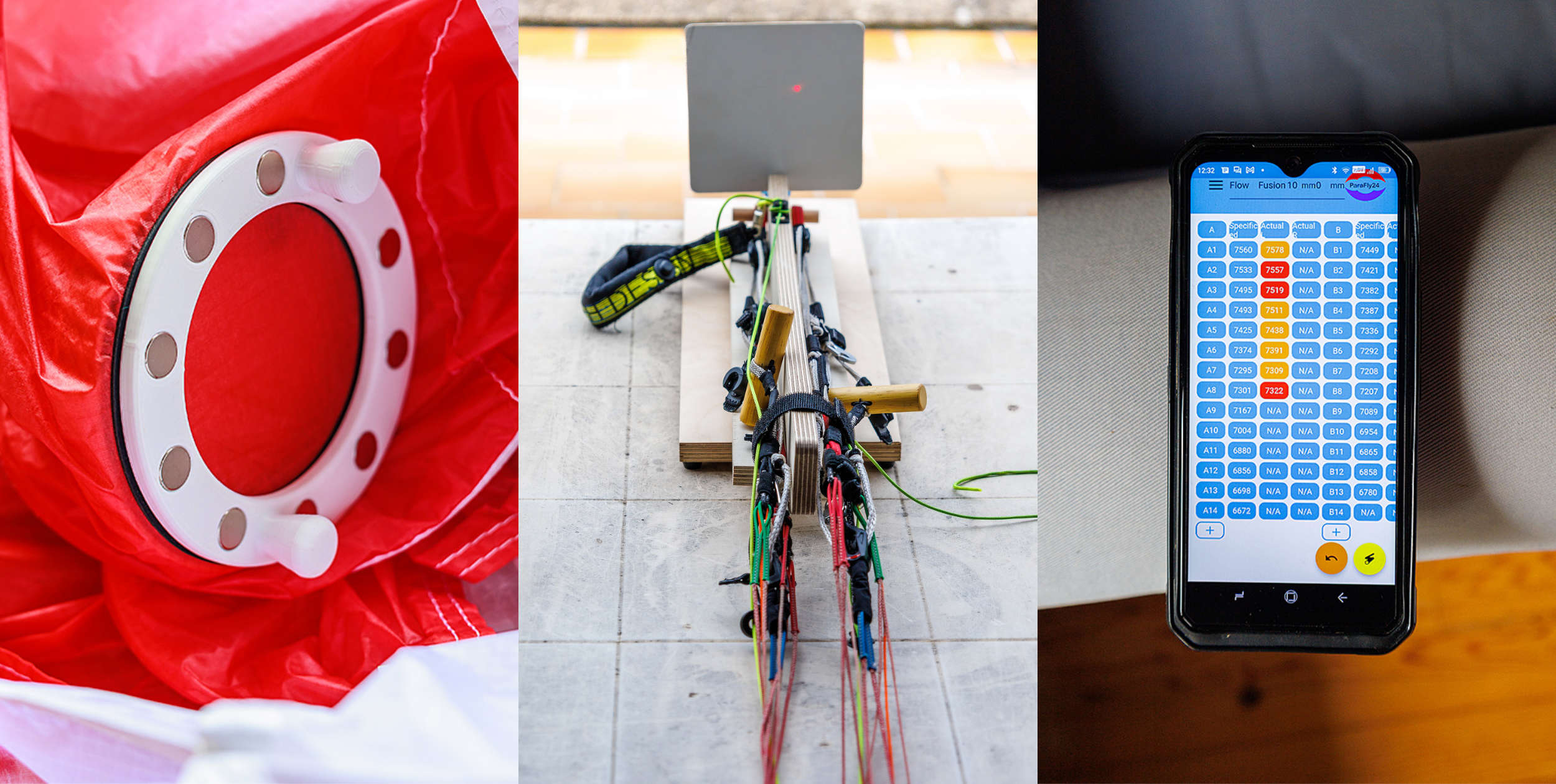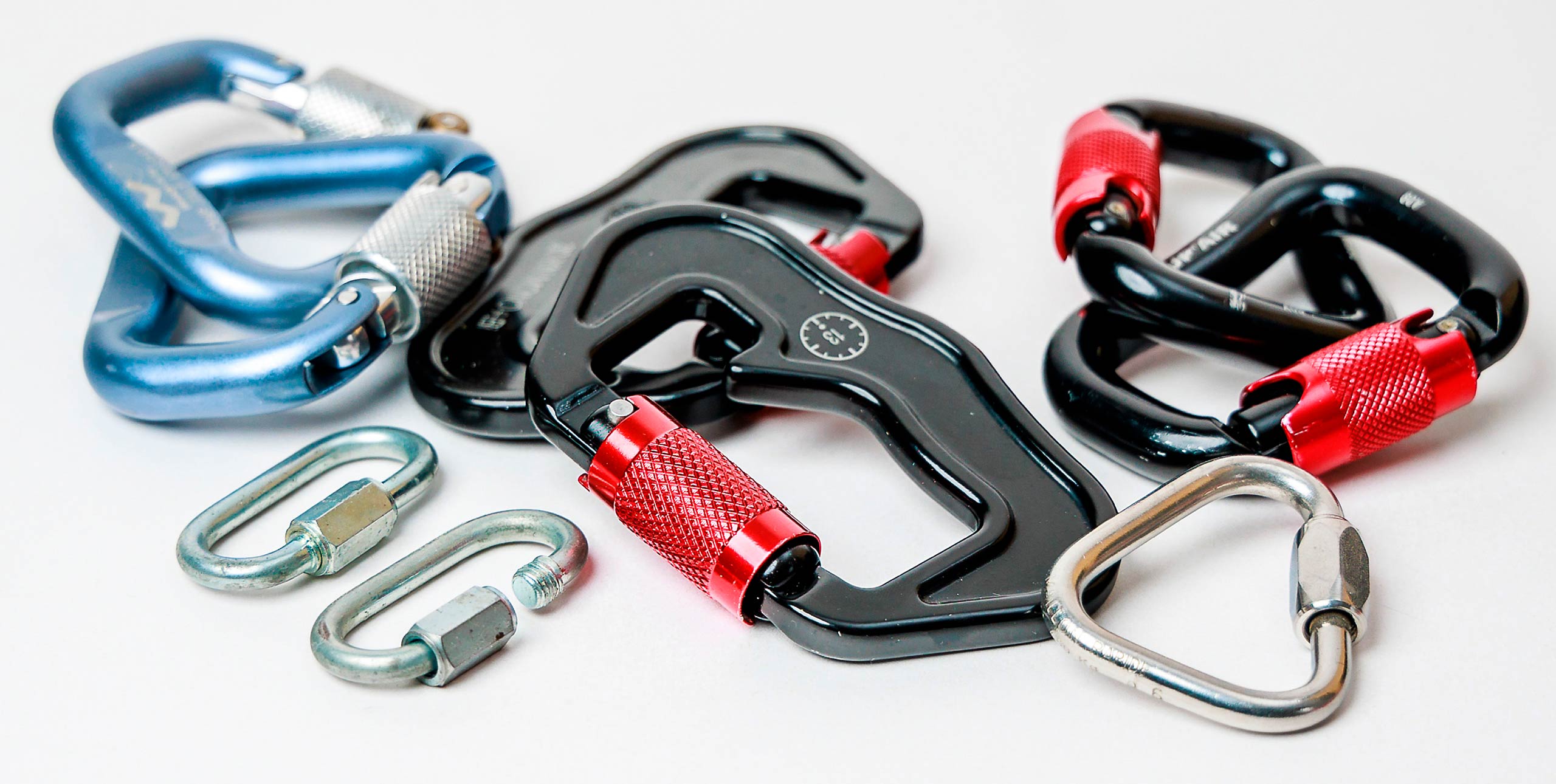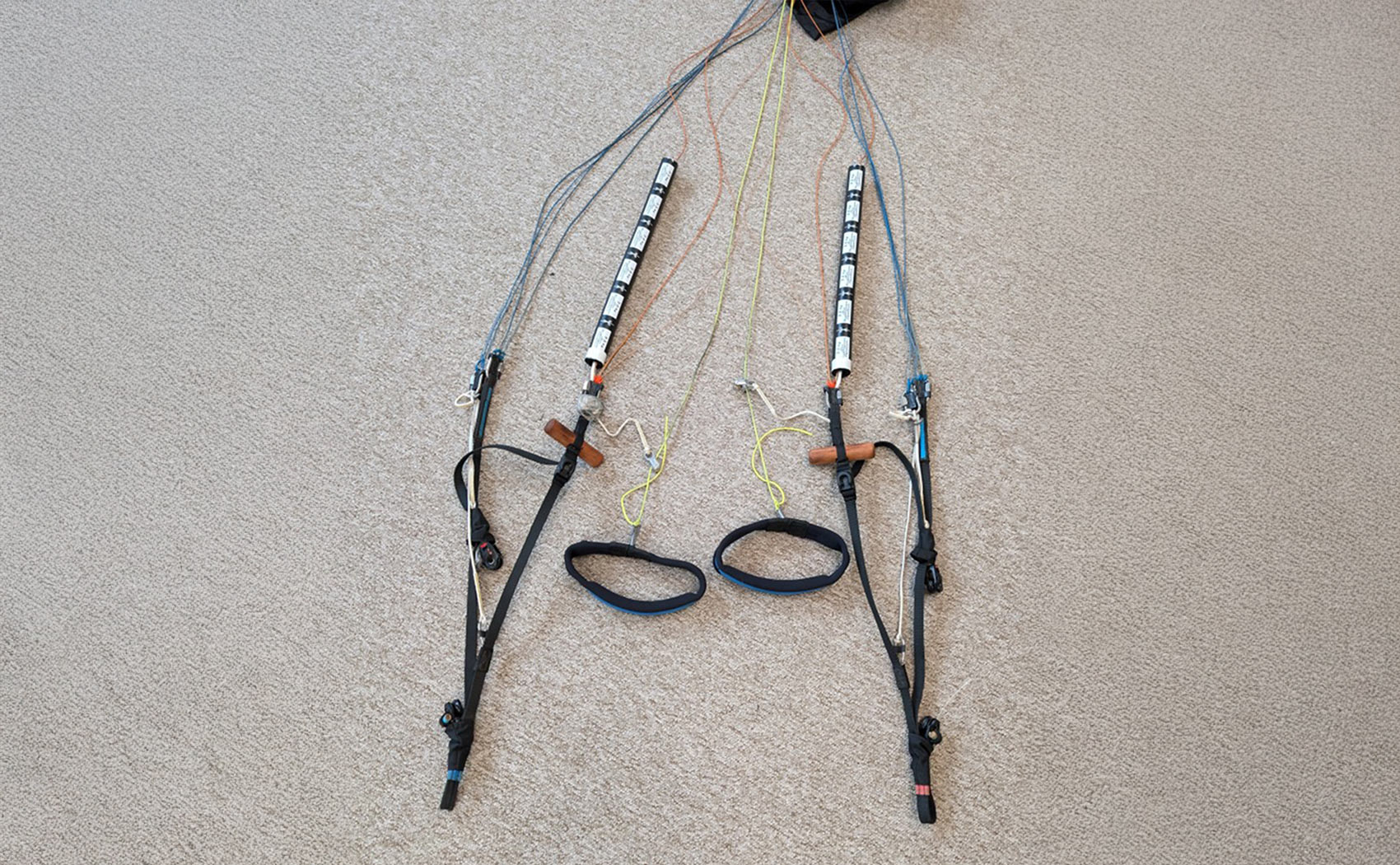
If you want to get the best out of your shiny new two-line paraglider you definitely need to have it trim-checked regularly. However, not everyone has easy access to a check-up workshop, and the ones that do exist are often busy with long waiting times.
ParaFly24 have come up with an answer to checking your wing at home. We tried out their new line checker and porosity meter. A Bettsometer, used to measure material strength, is also available.
Line checker
The line check consists of hardware and an app for Android. The hardware is delivered in flatpack form. There are various pieces of plywood plus a runner and some additional hardware items and all the screws you need. You will need to supply a 5kg weight.
Following the instructions I found it all pretty easy to put together, although a few extra guide holes would give the full Ikea experience. Still, within half an hour I had it built and ready to go.
Also supplied is a Bosch laser measurer and a 3D-printed line guide. With the app downloaded and the laser measurer paired to your phone you can start measuring the length of your lines.
Put the line in the guide, line up the laser with the white board and press the button: the measurement is taken and the system moves on to the next line automatically. Working through the wing methodically is pretty easy, especially once you get the hang of it.
At first I pressed on the wrong button a couple of times and had to start again, but I was able to get the whole wing done relatively quickly. The biggest issue was finding a space big enough – wings seem a lot larger inside!
If you have the correct trim lengths (usually available on the manufacturer’s website) you can create a csv file to measure against. The app will then highlight any lines that are out of trim as you go along. The app allows you to save your results, which you can then copy to your computer for analysis or just to keep so you can compare how the trim changes over time.
The only real issue I had with the whole system was the clip to hold the weight wasn’t up to the job, so I replaced it with a proper maillon.
Porosity checker
The line checker doesn’t look so different from those you will find in most workshops, but the porosity checker is a cheap and clever alternative to the €1,500 JDC porosity meter that most professional service and repair workshops use. What you get for just €60 is a bottomless plastic bottle, a length of hose and a clamp with magnetic closure. All you need to supply is a bucket of water.
The clamp with rubber seals goes on the material you want to test, and the hose is attached from its output to the bottle. On the bottle are three lines. You immerse the bottle in the water so the water inside the bottle goes to the top line, then seal the tube on tightly.
To take the measurement you start timing and lift the bottle so the water outside is level with the bottom line. Then you wait; the water level will drop, hopefully slowly, until it gets down to a middle line.
Stop your watch and you have a measurement of porosity in seconds that can be compared to the readings from a JDC. It’s a bit of a faff but I could get repeatable results. It is, of course, important to take readings from several places on the wing.
The verdict
I tried both systems on my vol-biv wing, before passing it to a professional testing house. I found my results were accurate when compared to those from the workshop. I also tested the porosity meter on a friend’s wing that had been condemned as near end of life, and again my results were within a few seconds of those from a professional workshop. If you can’t get to a workshop or want to keep a regular eye on the trim of your wing these units make that possible. It would make sense to buy them between a group of like-minded pilots, or as part of a club.
Of course, if you are selling your wing you will still have to have it verified by a certified workshop, but it is useful to have these tools at home. Hats off to Parafly24 for making these tools available ready to go.
Published in issue 242 (August 2023)











